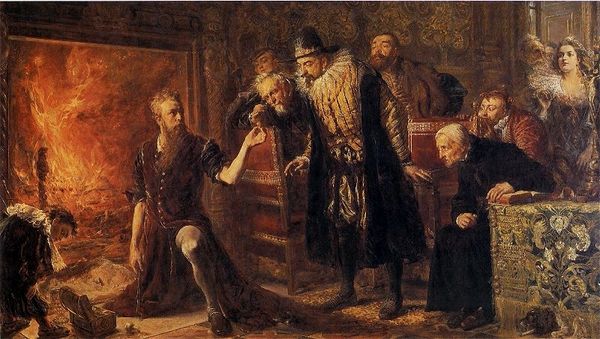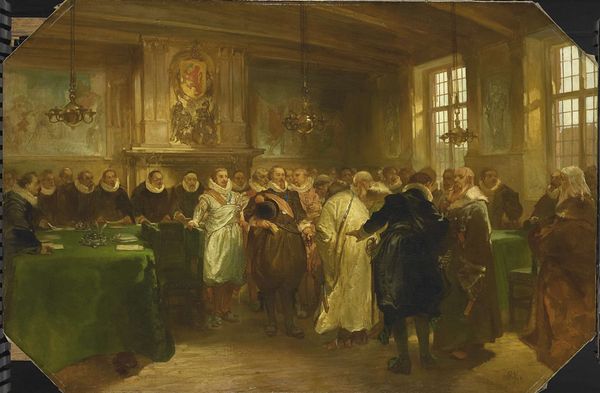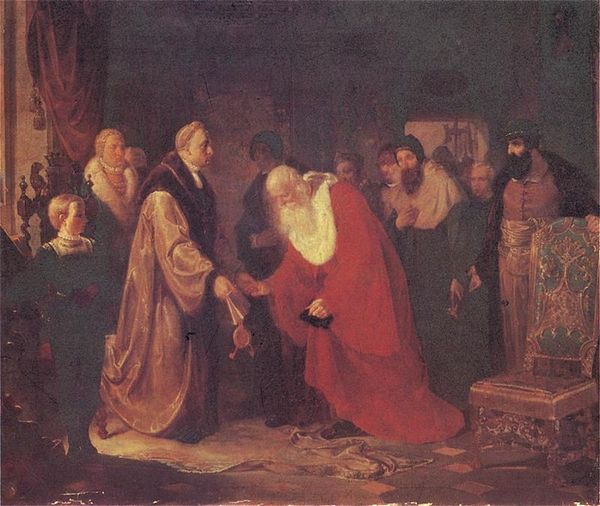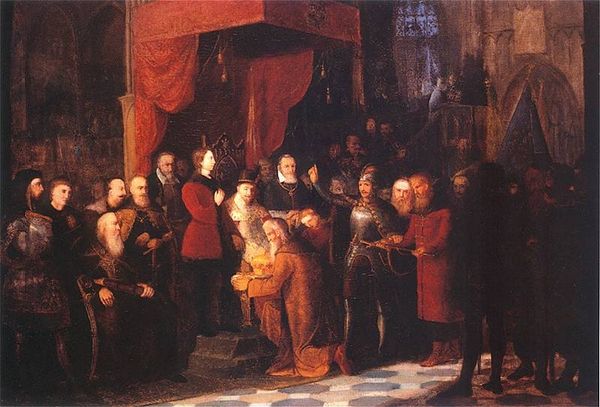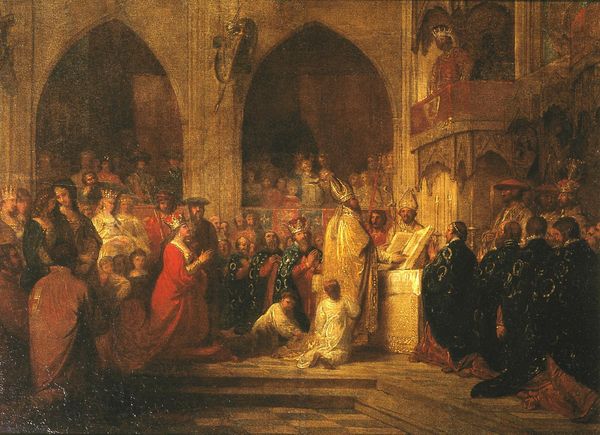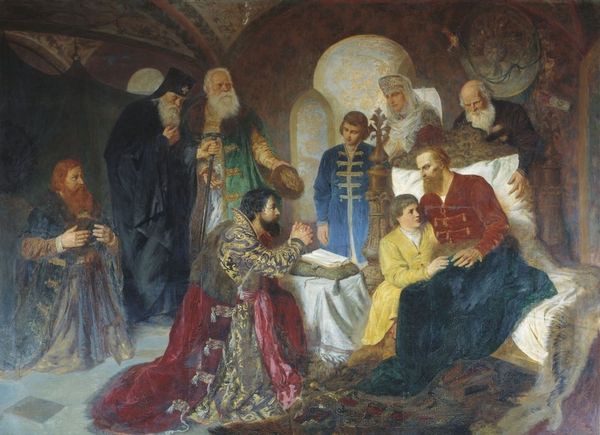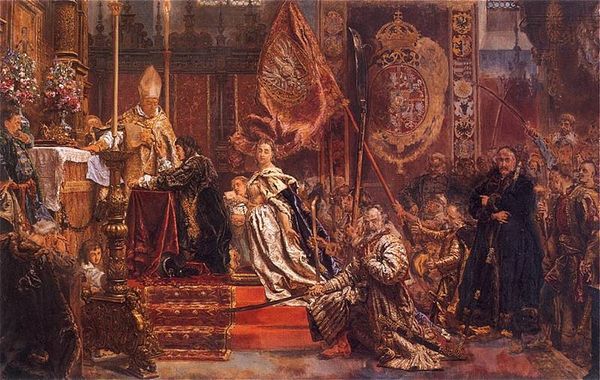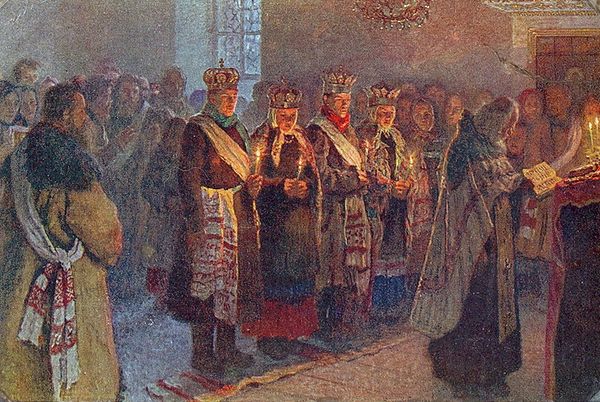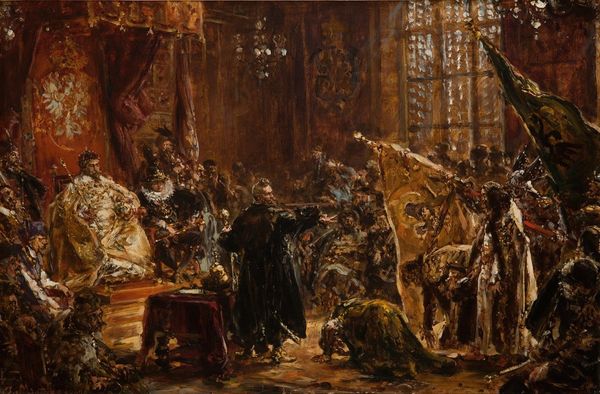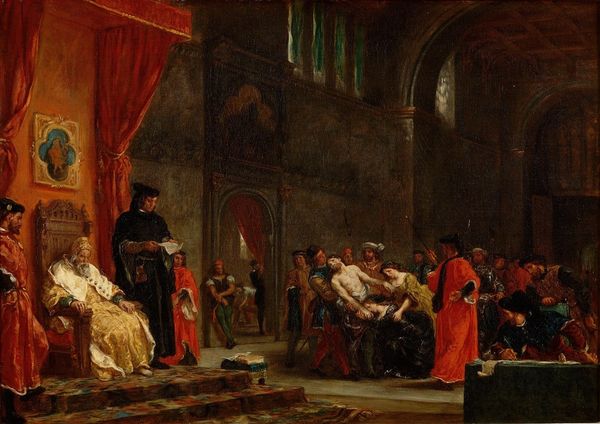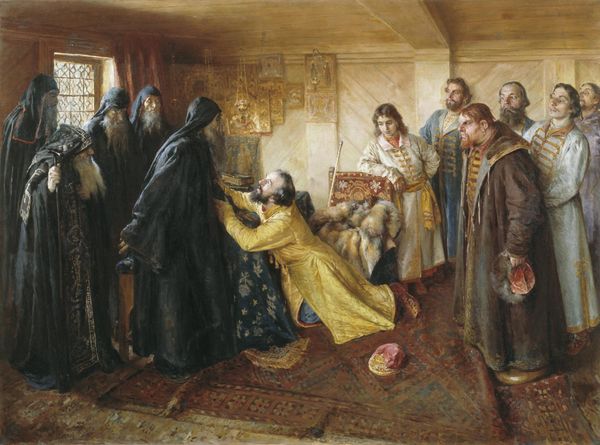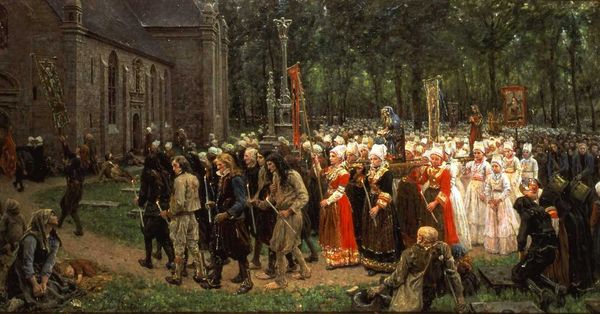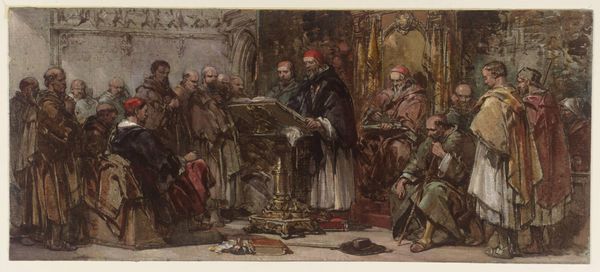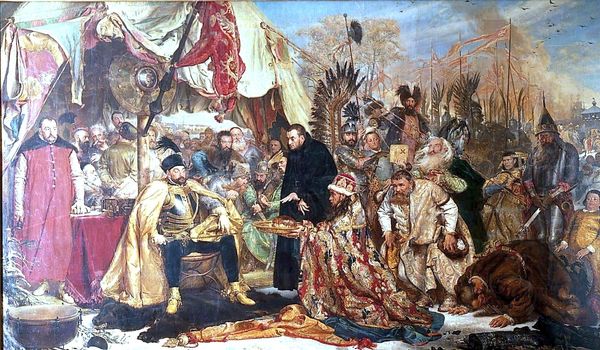
Dimensions: 298 x 512 cm
Copyright: Public domain
Curator: Welcome. Before us hangs Jan Matejko's imposing oil painting, "The Union of Lublin," completed in 1869. It's a work deeply rooted in Polish history, portraying a pivotal moment of political unification. Editor: Whoa, what a charged room. You can almost hear the scratching of quills and hushed arguing. It feels incredibly dramatic. Like a storm cloud ready to burst! Curator: Indeed. Matejko was known for his dramatic history paintings. The painting captures the signing of the Union of Lublin in 1569, an act which unified the Kingdom of Poland and the Grand Duchy of Lithuania into a single state, the Polish-Lithuanian Commonwealth. A foundational moment, historically speaking. Editor: Right, like watching history unfold! But look at the details! A chaos of faces, robes, a weird crucifixion gesture right in the middle! The colours too. Everything is saturated; as intense as the politics, I imagine. Curator: Absolutely, Matejko masterfully employs color and composition to highlight key figures and the gravity of the event. Note the central placement of the figures ratifying the treaty under the raised crucifix. But even then, his artistic liberties are worth pointing out; this isn't simple historical reportage, it’s interpretation and myth-making on a grand scale. Editor: Myth-making... That’s interesting, 'cause I kinda felt it already, you know? There's something epic and unreal here. Beyond accurate portraits. Maybe this painter actually wanted this unification. Curator: He did. He, through these grand historical narratives, was definitely invested in concepts of national identity and social progress, his goal through art. Remember he painted this when Poland didn't even exist as an independent state on the map. Editor: Wow, that’s huge. You can see it’s about hope more than fact. Suddenly, the theatrics don't bother me as much! It’s like, even if it is kinda over-the-top, you gotta admire that kind of passion. Curator: Precisely. It’s this fervent belief in the Union's importance that permeates the canvas and continues to resonate with viewers even today. It gives shape to Polish self-perception. Editor: This really made me consider art beyond 'pretty things on the wall'. It can actually carry big emotions and change how folks see their country. So much deeper now. Curator: Indeed. History painting's importance relies on how social consciousness, national will, and public education often are intertwined.
Comments
No comments
Be the first to comment and join the conversation on the ultimate creative platform.
